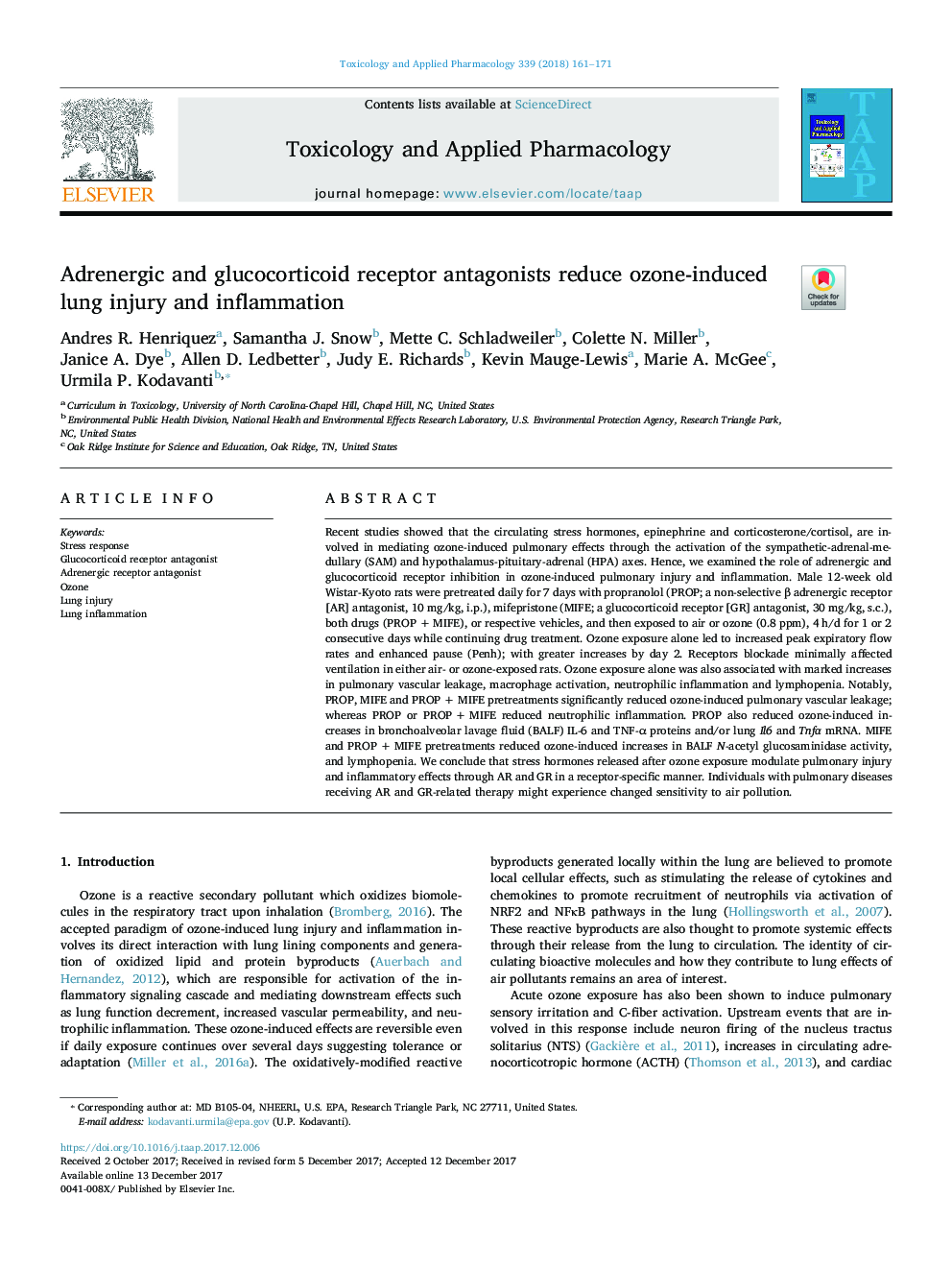| Article ID | Journal | Published Year | Pages | File Type |
|---|---|---|---|---|
| 8538941 | Toxicology and Applied Pharmacology | 2018 | 11 Pages |
Abstract
Recent studies showed that the circulating stress hormones, epinephrine and corticosterone/cortisol, are involved in mediating ozone-induced pulmonary effects through the activation of the sympathetic-adrenal-medullary (SAM) and hypothalamus-pituitary-adrenal (HPA) axes. Hence, we examined the role of adrenergic and glucocorticoid receptor inhibition in ozone-induced pulmonary injury and inflammation. Male 12-week old Wistar-Kyoto rats were pretreated daily for 7 days with propranolol (PROP; a non-selective β adrenergic receptor [AR] antagonist, 10 mg/kg, i.p.), mifepristone (MIFE; a glucocorticoid receptor [GR] antagonist, 30 mg/kg, s.c.), both drugs (PROP + MIFE), or respective vehicles, and then exposed to air or ozone (0.8 ppm), 4 h/d for 1 or 2 consecutive days while continuing drug treatment. Ozone exposure alone led to increased peak expiratory flow rates and enhanced pause (Penh); with greater increases by day 2. Receptors blockade minimally affected ventilation in either air- or ozone-exposed rats. Ozone exposure alone was also associated with marked increases in pulmonary vascular leakage, macrophage activation, neutrophilic inflammation and lymphopenia. Notably, PROP, MIFE and PROP + MIFE pretreatments significantly reduced ozone-induced pulmonary vascular leakage; whereas PROP or PROP + MIFE reduced neutrophilic inflammation. PROP also reduced ozone-induced increases in bronchoalveolar lavage fluid (BALF) IL-6 and TNF-α proteins and/or lung Il6 and Tnfα mRNA. MIFE and PROP + MIFE pretreatments reduced ozone-induced increases in BALF N-acetyl glucosaminidase activity, and lymphopenia. We conclude that stress hormones released after ozone exposure modulate pulmonary injury and inflammatory effects through AR and GR in a receptor-specific manner. Individuals with pulmonary diseases receiving AR and GR-related therapy might experience changed sensitivity to air pollution.
Keywords
Related Topics
Life Sciences
Environmental Science
Health, Toxicology and Mutagenesis
Authors
Andres R. Henriquez, Samantha J. Snow, Mette C. Schladweiler, Colette N. Miller, Janice A. Dye, Allen D. Ledbetter, Judy E. Richards, Kevin Mauge-Lewis, Marie A. McGee, Urmila P. Kodavanti,
